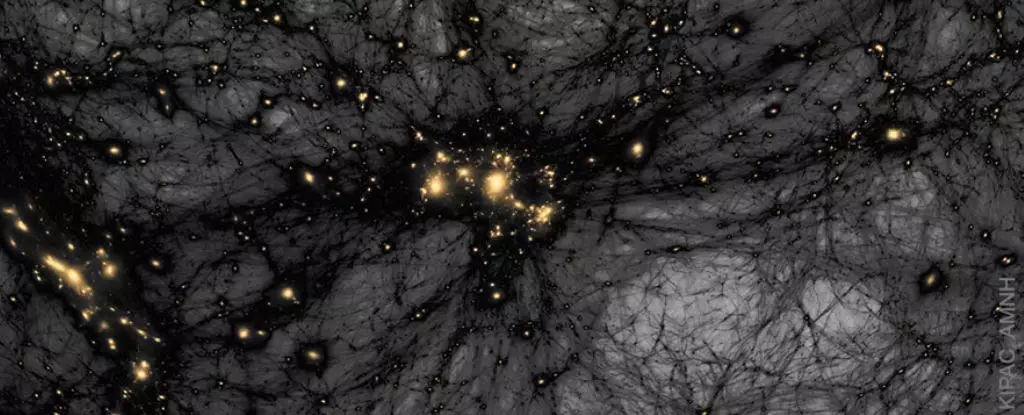In contemporary cosmology, the Hubble tension represents one of the most perplexing enigmas, leaving scientists scratching their heads in disbelief. The key issue arises from the difference in measurements regarding the expansion rate of the universe—while local observations yield a higher rate, those from the early universe suggest a significantly lower one. This mismatch between the two sets of data has thrown a wrench into the standard cosmological model, raising questions about our foundational understanding of the universe. Are our theories flawed? Could there be deeper, hidden aspects of reality that challenge centuries of scientific inquiry? Instead of dismissing dark matter or reworking general relativity, some researchers are expanding the conversation to include a fresh perspective: the evolution of dark matter itself.
Challenging Conventional Wisdom
Historically, dark matter has been treated as an immutable substance, a fixed cosmic entity existing alongside other components of the universe. However, the idea that dark matter could evolve is a radical departure from this long-held view. Why has this concept been largely overlooked? One reason is the overwhelming evidence supporting the existence of dark matter based on gravitational effects observed in galaxies and clusters. Researchers have meticulously cataloged evidence for something that doesn’t readily interact with light—an enigma that has become essential to our understanding of cosmic structure. The second reason lies in the scientific community’s instinct to outright dismiss notions that contradict established paradigms, such as attempts to modify gravity instead of accepting the existence of dark matter.
Yet, arguing for evolving dark matter could provide an innovative solution to bridging the discrepancy revealed by the Hubble tension. Instead of viewing dark matter as a fixed parameter in a cosmological equation, what if we considered it as dynamic, changing over time? Such a re-evaluation encourages imaginative exploration of the universe’s fundamental workings.
A New Perspective: Oscillating Dark Matter
Researchers proposing a model of evolving dark matter delve into the nuances surrounding potential variations in dark matter’s properties. They suggest that dark matter might not be a singular, static entity, but rather a complex tapestry with an evolving equation of state (EOS). By allowing dark matter to oscillate over cosmic timescales, scientists open the door to novel explanations for anomalies like the Hubble tension. This idea is not as far-fetched as it may seem—consider the behavior of neutrinos, particles that oscillate in mass despite their fleeting interactions with light. If we adopt a similar mechanism for cold dark matter, we could account for changes not only in structure formation but also in the rate of cosmic expansion.
Initial analysis indicates that a model comprising 15% oscillating dark matter could align well with current observational data while retaining the essence of previously accepted dark matter paradigms. This notion creates a balanced narrative that could potentially unify differing observational results and give rise to a cosmos in a constant state of evolution rather than a static framework governed by unyielding parameters.
Broader Implications: A Door to New Models
The implications of proposing an evolving dark matter model are significant and could catalyze a rethinking of myriad astrophysical phenomena. As researchers build on these ideas, we may find that an oscillatory component of dark matter helps to not only resolve the Hubble tension but also enhances the understanding of cosmic structure and formation. By integrating evolving dynamics into core assumptions, scientists might uncover connections between dark matter, dark energy, and possibly other unknown forces that drive cosmic evolution.
Indeed, this exploration unveils a sophisticated layer of complexity that modern astrophysics has yet to fully grapple with. As this field continues to expand, it will undoubtedly inspire the next generation of cosmologists to investigate concepts that were once dismissed. Ultimately, evolving dark matter could reshape our perceptions of the universe, demonstrating that even what we deem most steadfast may actually be fluid and capable of transformation. In such a dynamic universe, are we merely on the precipice of uncovering cosmic truths that have eluded us for centuries? The pursuit of answers has only just begun.

